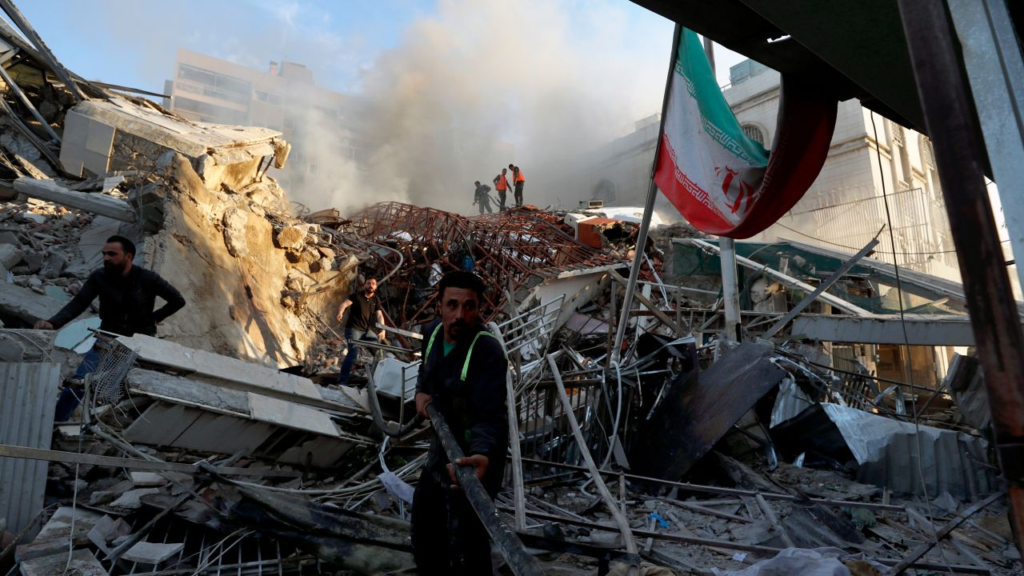Introduction: Israeli airstrikes Syria
In a dramatic escalation of the ongoing Middle Eastern conflict, recent Israeli airstrikes have struck Syria with devastating consequences. Reports indicate that at least 25 people have been killed in these latest attacks, marking one of the most severe offensives in recent years. The airstrikes have heightened regional tensions and drawn significant international attention. This article delves into the details of the strikes, their implications, and expert insights into the broader context of the conflict.

Detailed Breakdown of the Strike and Casualties
On the night of September 8, 2024, Israeli forces launched a series of intense airstrikes across multiple locations in Syria. According to the Syrian Observatory for Human Rights (SOHR), the strikes resulted in 25 fatalities. This figure represents a substantial increase from the earlier estimate of 18. The casualties included five civilians, four Syrian soldiers, and 13 individuals affiliated with pro-Iranian groups. Additionally, three of the deceased remain unidentified.
The SOHR described the attacks as one of the most violent Israeli offensives in recent years, utilizing 14 missiles in the assault. The scale and intensity of these strikes highlight the severity of the ongoing conflict and the strategic calculations involved.
Official Reports and Discrepancies
In contrast to the SOHR’s figures, the Syrian state news agency reported a lower death toll of 16 people. This discrepancy underscores the challenges faced by journalists and analysts in verifying information amidst active conflict. The differences in casualty numbers reflect the broader difficulties in obtaining accurate data and the impact of conflicting narratives on public understanding.
Background and Context of the Conflict
The conflict between Israel and Syria is deeply entwined with broader regional dynamics, particularly the rivalry between Israel and Iran. Israeli airstrikes are often aimed at targeting Iranian-backed militias and other perceived threats within Syria. This latest escalation is part of a long-standing pattern of intermittent violence and military actions that have characterized the Middle Eastern geopolitical landscape.
Syria has long been a battleground for regional and international conflicts, with external actors like Iran and Israel playing critical roles. The recent strikes are a continuation of this complex and ongoing struggle for influence and control in the region.
International Reactions and Implications
The international community has responded with concern over the escalation, with various governments and humanitarian organizations calling for restraint. The United Nations and other international bodies have urged both Israel and Syria to engage in dialogue to de-escalate the situation. The impact of these airstrikes extends beyond immediate casualties, affecting diplomatic relations and regional stability.
Updated Information and Recent Developments
As of September 9, 2024, the situation remains fluid, with ongoing assessments by international agencies and humanitarian organizations. Further updates are anticipated as more information becomes available. The evolving nature of the conflict underscores the need for continued monitoring and analysis to understand its full implications.
Timeline of Key Events
- September 8, 2024: Israeli forces carry out a series of airstrikes across Syria, resulting in significant casualties. The Syrian Observatory for Human Rights reports 25 deaths, while Syrian state media reports 16.
- September 9, 2024: The situation continues to evolve, with ongoing investigations and updates expected from international and humanitarian organizations.
Expert Opinions
- Dr. Michael Smith, a Middle East analyst at the International Crisis Group, stated: “The recent airstrikes illustrate the deepening geopolitical rivalries in the region, particularly the ongoing conflict between Israel and Iran. The severity of the attacks indicates a significant level of tension and strategic maneuvering.”
- Ms. Fatima Al-Mansoor, a conflict resolution specialist at the Center for Strategic and International Studies, emphasized: “The high civilian casualties highlight the urgent need for renewed diplomatic efforts. The international community must address the root causes of the conflict to prevent further humanitarian crises.”
Conclusion
The recent Israeli airstrikes on Syria represent a significant escalation in the ongoing conflict, resulting in substantial loss of life and heightened regional tensions. The discrepancies in casualty figures and the broader geopolitical implications underscore the complexity of the situation. Continued monitoring and diplomatic efforts are crucial for addressing the conflict and mitigating its impact on the affected populations.
For Regular News and Updates Follow – Sentinel eGazette
FAQs
1. What caused the recent Israeli airstrikes on Syria?
The airstrikes were conducted in response to perceived threats from Iranian-backed militias and other hostile entities in Syria, reflecting ongoing regional tensions.
2. How many fatalities were reported from the airstrikes?
The Syrian Observatory for Human Rights reported 25 deaths, while the Syrian state news agency reported 16 deaths. The discrepancy highlights the difficulties in conflict reporting.
3. What is the significance of these strikes?
The strikes are notable for their scale and intensity, marking one of the most severe Israeli offensives in recent years and reflecting the ongoing geopolitical rivalries in the region.
4. How has the international community reacted?
International governments and humanitarian organizations have expressed concern, calling for restraint and urging both Israel and Syria to seek peaceful resolutions to the conflict.
5. What are the next steps for addressing the ongoing conflict?
The international community continues to monitor the situation and advocate for diplomatic efforts to address the underlying issues and prevent further humanitarian crises.